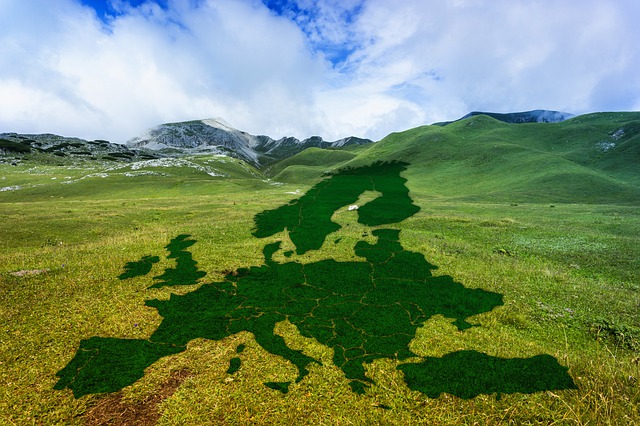
EU taxonomy for sustainable activities is a classification system created to help in establishing environmentally sustainable economic activities and thus direct investments toward such activities.
Build Green received an EU taxonomy-compliant confirmation for its new housing construction project that involves public lighting powered by photovoltaics, a rainwater retention pond surrounded by green public space, and an option to establish a green roof on every building.
The Taxonomy Regulation (2020/852) was published in 2020 as a part of Green Deal initiatives. The taxonomy provides a unified conceptual framework defining and facilitating environmental sustainability for enterprises within the European Union. The objectives of EU taxonomy are climate change mitigation, climate change adaptation, sustainable use and protection of water and marine resources, transition to circular economy, pollution prevention and control, and protection and restoration of biodiversity and ecosystems. Use of the Taxonomy system is largely voluntary for enterprises, but those involved need not only to contribute to achieving at least one of the objectives but likewise must not weaken any of the others. An entity must also meet so-called “minimum social safeguards.” The idea behind EU taxonomy is that companies standing out in comparison to their peers and competitors should benefit from greater public interest to invest in them. Taxonomy also should protect investors from greenwashing.
Taxonomie EU pro udržitelné aktivity je klasifikační systém vytvořený za účelem usnadnění určování environmentálně udržitelných ekonomických aktivit, a tedy směřování investic k takovým aktivitám.
Firma Build Green obdržela potvrzení plnění taxonomie EU pro svůj nový projekt bytové výstavby, který zahrnuje veřejné osvětlení napájené fotovoltaikou, retenční jezírko na dešťovou vodu obklopené zeleným veřejným prostranstvím a možnost vybudování zelené střechy na každém domě.
Nařízení taxonomie (2020/852) bylo vydáno v roce 2020 jako součást iniciativy Zelené dohody. Taxonomie poskytuje jednotný koncepční rámec, který definuje a usnadňuje environmentální udržitelnost pro podniky v Evropské Unii. Cíle taxonomie EU jsou zmírnění klimatické změny, přizpůsobení se klimatické změně, udržitelné využívání vodních a mořských zdrojů, přechod k oběhovému hospodářství, prevence a kontrola znečištění a ochrana a obnova biodiverzity a ekosystémů. Použití systému taxonomie je pro podniky povětšinou dobrovolné, ale ty, které se účastní, musí nejen přispívat ke splnění alespoň jednoho z cílů, ale nesmí ani ohrozit kterýkoli z dalších. Subjekt musí rovněž splňovat takzvanou „minimální společenskou ochranu“. Myšlenka za taxonomií EU je, že firmy vyčnívající ve srovnání se svými konkurenty budou prospívat z většího zájmu veřejnosti do nich investovat. Taxonomie by měla i ochraňovat investory před greenwashing.
English Editorial Services’ mission is to assist international businesses and organizations of all sizes to communicate clearly, correctly, and persuasively with their business partners and target audiences.
Simply subscribe to receive our Business Term of the Day at no charge to your inbox each business day, with explanation in English and Czech.



English Editorial Services’ mission is to assist international businesses and organizations of all sizes to communicate clearly, correctly, and persuasively with their business partners and target audiences.
Simply subscribe to receive our Business Term of the Day at no charge to your inbox each business day, with explanation in English and Czech.

